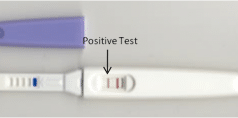
During an extreme and rigorous training session, calories are burned at an accelerated rate, the physical exertion prompts a profuse release of sweat, and your muscles undergo intense stress and strain. Because of these, designing a post-workout recovery routine is integral to help nourish your body and regain energy for the subsequent training sessions.
The best post-workout recovery routines will vary depending on individual preferences, fitness levels, and the specific type of training undertaken. However, certain universal principles can guide the design of an effective post-workout recovery routine. Consider the following factors to tailor your recovery plan:
Take Nonsteroidal Anti-Inflammatory Drugs
Suppose you are experiencing muscle aches and pains. In that case, your healthcare provider may recommend using nonsteroidal anti-inflammatory drugs (NSAIDs) such as naproxen to help alleviate discomfort and reduce inflammation. It’s crucial to follow their guidance and consider the following general information:
- Follow Dosage Instructions: Take NSAIDs precisely as prescribed by your healthcare provider. Stick to the recommended and safe naporoxen dosage and schedule. Avoid self-medicating or exceeding the suggested amount, as misuse can lead to adverse effects.
- Take with Food or Milk: To minimize the risk of stomach upset, consider taking NSAIDs with food or milk. It can help protect your stomach lining and reduce the likelihood of gastrointestinal side effects.
- Avoid Alcohol: Limit or avoid alcohol consumption while taking NSAIDs, as combining the two can increase the risk of stomach irritation and other complications.
- Stay Hydrated: Drink plenty of water while taking NSAIDs to stay hydrated and support kidney function. Adequate hydration is essential, especially if you are experiencing muscle soreness, as it aids overall recovery.
It’s essential to note that while NSAIDs can be effective in managing pain and inflammation, they may not be suitable for everyone. Your healthcare provider will consider your health status, any pre-existing conditions, and potential interactions with other medications before prescribing NSAIDs. Always prioritize open communication with your healthcare provider to ensure a safe and tailored approach to managing muscle aches and pains.
Go to the Sauna
Stepping into the sauna is like entering a zone of relaxation. The heat helps your muscles loosen up, reducing tension and promoting a sense of calm. It’s your retreat after a challenging workout.
Additionally, saunas make your heart work a bit harder, but in a good way! The heat expands your blood vessels, allowing more oxygen to reach your muscles. This boost in circulation is like a delivery service for nutrients, helping your muscles recover faster.
Moreover, sweating helps flush out toxins from your body and can contribute to clearer skin. It’s like giving your body a mini detox while you relax. The warmth in the sauna helps increase your body’s flexibility. As your muscles warm up, they become more pliable, making stretching easier. It can be particularly beneficial for improving your overall flexibility.
After your sauna session, it’s crucial to hydrate. You’ll likely lose some fluids through sweat, so replenishing with water is vital. Consider bringing a water bottle to sip on in the sauna.
Take An Ice Bath
Taking a dip in an ice bath after a workout can be a refreshing way to help your muscles feel better. But, to make it work well, we must do it right. Start by gathering your supplies and choosing comfortable attire that allows exposure to the cold water.
Fill the bath with cold water, aiming for a temperature between 10 to 15 degrees Celsius (50 to 59 degrees Fahrenheit). If you’re using ice, add it gradually. Then, immerse yourself in the bath for around 10 to 15 minutes. Listen to your body. If the cold becomes too intense, shortening the duration is okay.
While in the bath, incorporate gentle movements like leg lifts or ankle rotations. It encourages circulation and enhances the benefits of cold water immersion. After the cold dip:
- Allow your body to warm up gradually.
- Wrap yourself in a warm blanket or towel and wear warm clothing.
- Rehydrate with fluids post-ice bath to replenish your body.
Get A Massage
Getting a massage after exercising is like giving your muscles a nice break. It’s not just a fancy treat. It’s good for your body. A massage helps get rid of any tight spots or knots. Plus, it improves your blood flow, bringing more oxygen and good stuff to your muscles so they can feel better faster.
Consider making massage a regular part of your self-care routine. Consistent sessions can provide ongoing benefits for your physical and mental well-being. When seeking a massage, opt for a qualified and experienced massage therapist. They can assess your needs and tailor the session to address your concerns.
Have A Well-Balanced, Complete Meal
A well-balanced, complete meal should encompass the essentials: protein to maintain and build muscle, carbohydrates to restock glycogen stores for your next workout, and healthy fats to assist in managing inflammation.
Consider a lean chicken breast or a hearty portion of beans as your protein powerhouse, quietly working to maintain and build those hard-working muscles. Next, add a generous serving of whole grains like brown rice or quinoa.
These are your trusty carbohydrates, diligently restocking your glycogen stores, the energy vault for your upcoming workout feats. Don’t forget to invite avocados, nuts, or olive oil to the party.
These are your healthy fats, the peacekeepers managing inflammation and ensuring your body stays in harmony. Together, they create a symphony of nutrients, fueling your recovery and laying the groundwork for whatever challenges lie ahead.
Final Takeaway
Recovery is not a one-size-fits-all approach. It’s about tailoring strategies to your individual needs. So, embrace the post-workout rituals, prioritize rest, and make recovery an integral part of your fitness journey.








